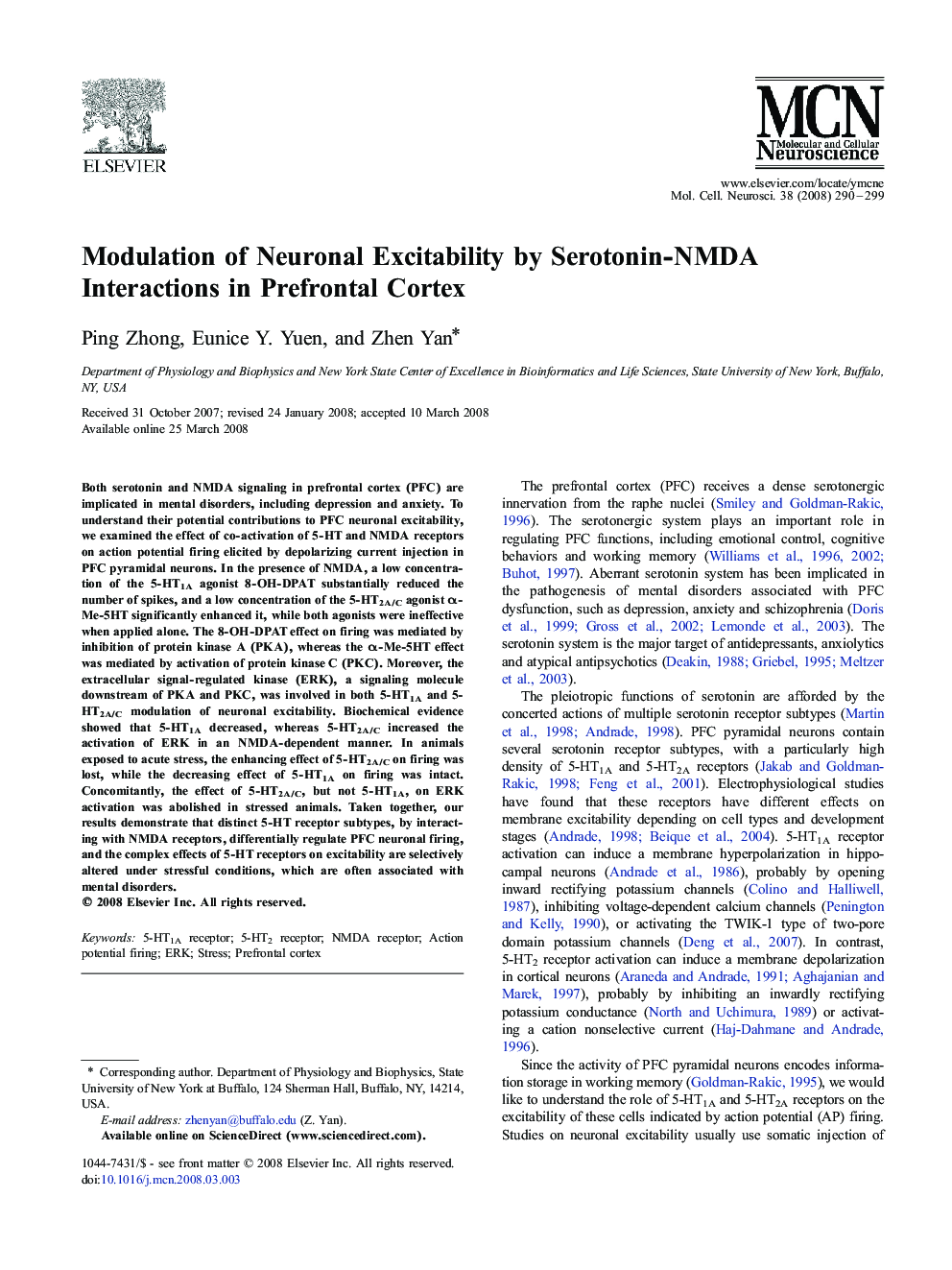| Article ID | Journal | Published Year | Pages | File Type |
|---|---|---|---|---|
| 2199114 | Molecular and Cellular Neuroscience | 2008 | 10 Pages |
Both serotonin and NMDA signaling in prefrontal cortex (PFC) are implicated in mental disorders, including depression and anxiety. To understand their potential contributions to PFC neuronal excitability, we examined the effect of co-activation of 5-HT and NMDA receptors on action potential firing elicited by depolarizing current injection in PFC pyramidal neurons. In the presence of NMDA, a low concentration of the 5-HT1A agonist 8-OH-DPAT substantially reduced the number of spikes, and a low concentration of the 5-HT2A/C agonist α-Me-5HT significantly enhanced it, while both agonists were ineffective when applied alone. The 8-OH-DPAT effect on firing was mediated by inhibition of protein kinase A (PKA), whereas the α-Me-5HT effect was mediated by activation of protein kinase C (PKC). Moreover, the extracellular signal-regulated kinase (ERK), a signaling molecule downstream of PKA and PKC, was involved in both 5-HT1A and 5-HT2A/C modulation of neuronal excitability. Biochemical evidence showed that 5-HT1A decreased, whereas 5-HT2A/C increased the activation of ERK in an NMDA-dependent manner. In animals exposed to acute stress, the enhancing effect of 5-HT2A/C on firing was lost, while the decreasing effect of 5-HT1A on firing was intact. Concomitantly, the effect of 5-HT2A/C, but not 5-HT1A, on ERK activation was abolished in stressed animals. Taken together, our results demonstrate that distinct 5-HT receptor subtypes, by interacting with NMDA receptors, differentially regulate PFC neuronal firing, and the complex effects of 5-HT receptors on excitability are selectively altered under stressful conditions, which are often associated with mental disorders.
